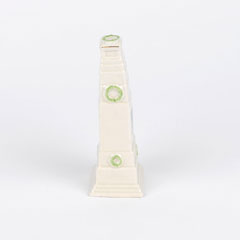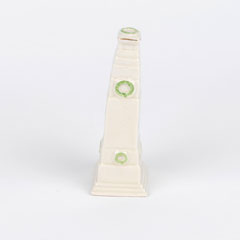
Online Collection
« Prev - 1 of 1 results - Next »
Model of the Cenotaph in Whitehall, London, 1925 (c)
Souvenir ceramic model, 1925 (c).
Model of the Cenotaph with a shield with Weymouth's coat of arms, a three-masted ship, above a scroll, inscribed 'Model of the Cenotaph erected in Whitehall London in Memory of the Fallen in the Great War 1914-1918' and 'Weymouth'.
To mark the formal ending of World War One (1914-1918) the British Government organised a national celebration called 'Peace Day' on 19 July 1919. The Cenotaph was built specially for this celebration and proved to be its most important legacy. Designed as a temporary structure by the architect Sir Edwin Lutyens, the Cenotaph was a simple and secular monument, in the form of a catafalque (raised platform used to support a coffin or body). The name was the derived from the Greek for 'empty tomb' and the monument clearly alluded to the problems of the missing and un-repatriated war dead. Its function was to serve as a saluting point for the military parade which was the main event of the day. However, it proved to be overwhelmingly popular with the public as a focal point for mourning and remembrance. It swiftly established itself as Britain's national war memorial and calls quickly grew for it to be rebuilt in stone.
NAM Accession Number
NAM. 2002-09-72--1
Copyright/Ownership
National Army Museum Copyright
Location
National Army Museum, Study collection
Object URL
https://collection.nam.ac.uk/detail.php?acc=2002-09-72--1




